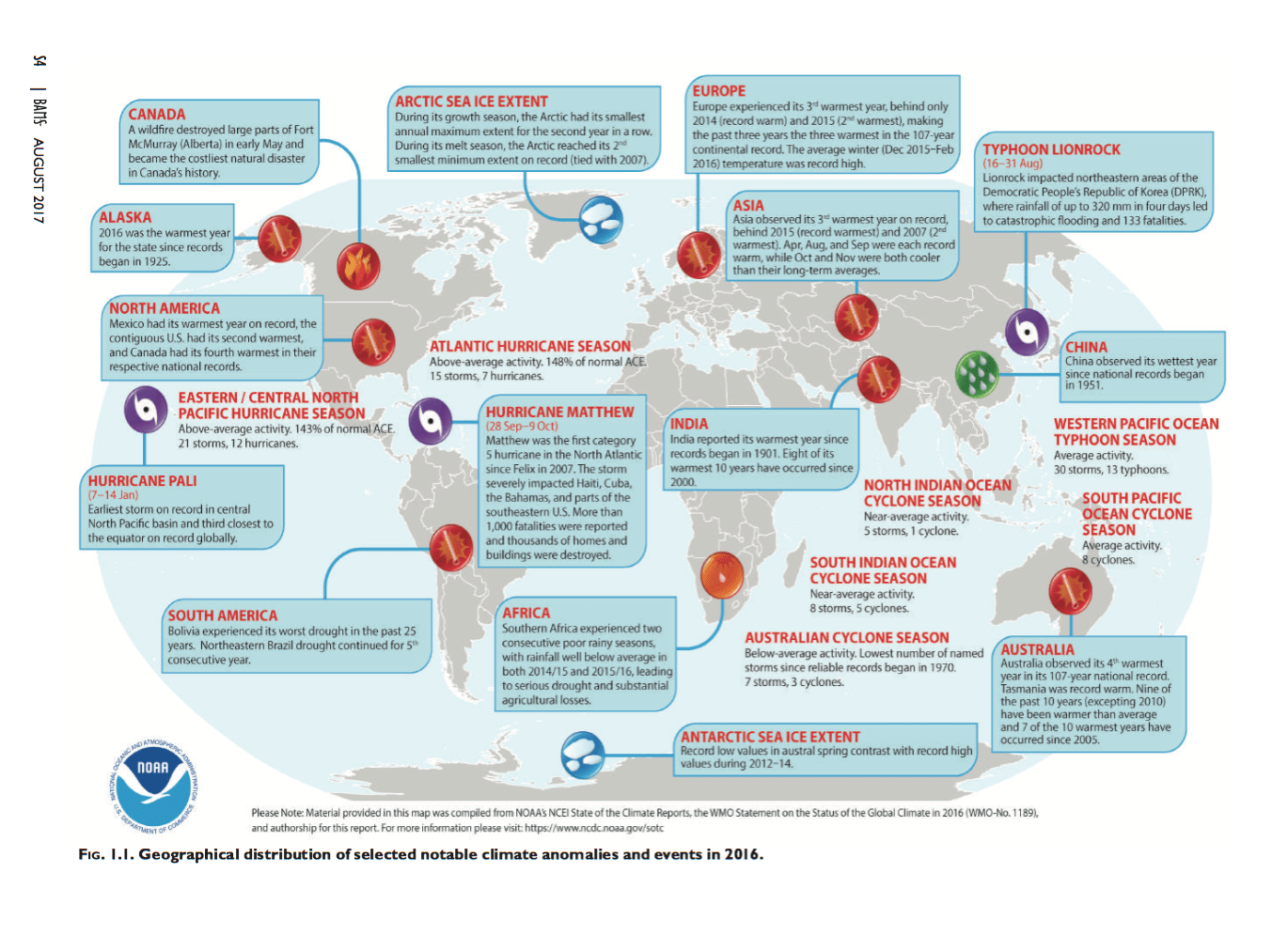Houston is America’s fourth largest city. It is currently being inundated with historic rainfall, stranding many thousands of people and upending one of the most important metropolitan areas in the country. Harvey, it seems, is yet another extreme weather event–and the latest that can be linked to our ever changing climate.
This year, 2017, is on track to be the hottest year on record. If it is, it will steal that superlative from 2016. Before 2016, the hottest year was 2015; before 2015, the hottest year was 2014. Notice a trend?
Two studies out this month shed light on just how unusual this situation is.
The first, published in Geophysical Research Letters, finds that the chance that 2016 would be as warm as it was without human-caused global warming is almost infinitesimally small — about one in a million.
A three-year run of record-breakingly warm years is also quite unlikely — slightly less than one in three thousand.
These assessments of probability indicate that the kind of dangerous and irreversible climate change scientists have warned of for decades has arrived — it, in fact, arrived years ago.
Humans are making the planet do radical, new things of a sort not observed in recorded history. These temperature records, creeping steadily higher each year, are one example. Temperatures would not be climbing in this way if not for us.
“The things that are likely to impact us most about climate change aren’t the averages, they’re the extremes,” said Michael Mann, the lead researcher on the study and a climate scientist at Pennsylvania State University, told veteran science journalist Tim Radford. “Whether it’s extreme droughts, or extreme floods, or extreme heat waves, when it comes to climate change impacts … a lot of the most impactful climate related events are extreme events. The events are being made more frequent and more extreme by human-caused climate change.”
A second study out this month shed light on some more of those extremes that occurred in 2016. Among them are freakishly warm temperatures in the Arctic Ocean, shrinking glaciers, rising seas — and ever-climbing concentrations of greenhouse gases in the atmosphere, insuring more climate change in years to come.
The American Meteorological Society’s 2016 State of the Climate report also documented unusual weather around the world. During every month of 2016, for instance, 12 percent of the world was experiencing severe drought — more than ever before. The earth saw 93 tropical storms and 58 hurricanes, typhoons and cyclones — both well above average.
So here is our Map of the Day, courtesy of the State of the Climate Report. (Larger image here)


Though these droughts and severe storms have the greatest effect on people’s lives, some of the observations regarding the oceans are perhaps most alarming. Oceans were warmer than they’ve ever been in 2016, which can have dramatic implications for weather systems, as well as sea life. Biodiversity in the oceans is rapidly declining. Meanwhile, a warm Arctic meant that sea ice fell to record lows, decimating ecosystems and raising sea levels.
While there is no doubt in the scientific community that climate change is happening and that it will continue to happen, there is some disagreement about how quickly it will progress.
The last few years show it is progressing quite quickly — and while some international governments are taking considerable steps to confront it, the world on the whole will have to move faster to keep up.
